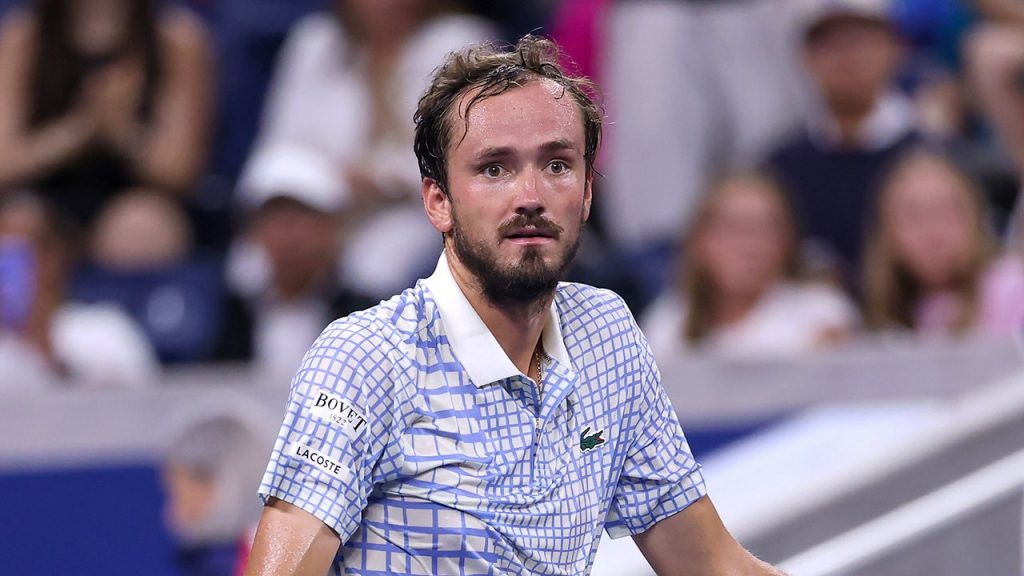Tennis Controversy: Photographer Claims Innocence as Medvedev Melts Down at US Open
The Incident and Its Aftermath
A controversial moment at the 2025 US Open has left a photographer stripped of his credentials and a top-seeded player eliminated after an on-court meltdown. During a critical match point in the first round, freelance photojournalist Selcuk Acar stepped onto the court between Frenchman Benjamin Bonzi’s first and second serve attempts against 13th-seeded Daniil Medvedev. The intrusion prompted chair umpire Greg Allensworth to pause the match and grant Bonzi another first serve attempt—a decision that triggered Medvedev’s explosive reaction. What followed was a nearly seven-minute delay filled with heated exchanges between Medvedev and the umpire. The United States Tennis Association later revoked Acar’s tournament credential, stating he had “disregarded instructions” from both security personnel and the chair umpire to remain in place.
The Photographer’s Defense
Speaking to the Daily Mail after the incident, Acar portrayed himself as “a victim and totally innocent” in the situation. “This incident has already turned into a lynching, and although I’m innocent, I’ve suffered greatly,” he explained. Acar claims a security official told him “the match is stopped” before he entered the court, insisting he “returned to the official twice and didn’t enter” initially. The photographer defended his professional experience and judgment, noting his extensive background covering major events including Presidential visits to Europe, NATO summits, and the FIFA World Cup. “I’m not a photojournalist that can make such a mistake,” Acar asserted, suggesting that camera footage would vindicate him if reviewed properly. Despite his protests, the USTA maintained that he had disregarded clear instructions, leading to the revocation of his credentials.
Medvedev’s Explosive Reaction
Medvedev’s reaction to the umpire’s decision was theatrical and intense. The Russian player, clearly frustrated by what he perceived as unfair officiating, attempted to rally the crowd against Allensworth, raising his arms to encourage spectators to boo. “He wants to go home guys,” Medvedev was heard saying about the umpire. “He doesn’t like to be here. He gets paid by the match, not by the hour.” In post-match comments, Medvedev clarified that his anger wasn’t directed at the photographer but at the umpire’s ruling. “I was not upset with the photographer. I was upset with the decision,” he explained. “The delay from the photographer was probably four seconds and a half. I’m not sure it’s enough for a first serve.” The outburst seemed to temporarily energize Medvedev, who managed to extend the match, but couldn’t prevent his eventual elimination.
Bonzi’s Perspective and Victory
Bonzi, meanwhile, felt Medvedev’s reaction was excessive and inappropriate. “I mean, the rule is the rule. The guy went on the court between two serves,” the Frenchman stated matter-of-factly in his post-match comments. “It’s not my call to say first serve. And I think, yes, Daniil started it, and he put oil on the fire.” Despite the drama and Medvedev’s temporary comeback, Bonzi managed to maintain his composure and capitalize on the opportunity. The unexpected disruption didn’t derail his focus, as he secured what became one of the tournament’s most significant upsets. After a back-and-forth battle, Bonzi defeated the veteran Russian player with a final score of 6-3, 7-5, 6-7 (5), 0-6, 6-4, advancing to face American Marcos Giron in the second round.
The Broader Context of Tennis Outbursts
This incident joins a growing list of high-profile tennis meltdowns that have become almost as much a part of the sport as the athleticism itself. From John McEnroe’s famous “You cannot be serious!” to Serena Williams’ confrontations with officials, tennis has a rich history of emotional outbursts under pressure. What makes Medvedev’s situation particularly interesting is how it bridges the gap between legitimate competitive concerns and theatrical displays of frustration. The Russian player has developed a reputation for emotional reactions throughout his career, sometimes using them strategically to reset matches or disrupt opponents’ momentum. While some tennis purists criticize these displays as unsportsmanlike, others argue they add human drama to a sport that demands incredible mental discipline.
Lessons and Implications
The incident raises important questions about court protocol, security procedures, and the high-pressure environment of Grand Slam tournaments. For photographers and media personnel, Acar’s experience serves as a cautionary tale about the importance of adhering strictly to venue rules, regardless of what they believe they’ve been told verbally. For players like Medvedev, the episode highlights how momentary losses of composure can potentially derail matches and tournaments. Though he recovered to win two sets after his outburst, the emotional energy expended may have contributed to his eventual five-set loss. For tournament organizers, the controversy underscores the need for clearer communication protocols between security personnel, officials, and media representatives. As the US Open continues, this first-round drama has already provided one of the tournament’s most memorable moments, showing how split-second decisions and reactions can dramatically alter the trajectory of a match, a tournament, and potentially even careers.


